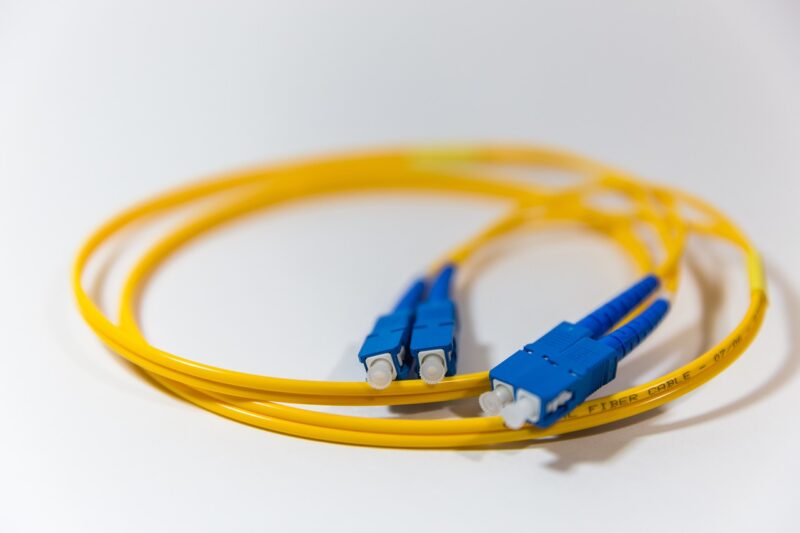The Evolution of the Internet: How It Transformed from Dial-Up to Fiber Optics
November 16, 2024

The Internet has undergone a remarkable transformation since its inception, evolving from the slow, cumbersome dial-up connections of the early days to the lightning-fast fiber optics we enjoy today. This evolution not only changed how we access information but also revolutionized communication, business, and daily life. In this article, we will explore the significant milestones in this journey, the technology behind it, and the implications for the future.
1. The Birth of the Internet
The Internet’s roots can be traced back to the 1960s when ARPANET, funded by the U.S. Department of Defense, connected multiple computers to share research data. Initially, it was a closed network used by researchers and the military. However, innovations in networking and communication paved the way for broader access.
In the 1980s, the introduction of the Transmission Control Protocol/Internet Protocol (TCP/IP) defined how data could be transmitted across networks, ultimately leading to the commercialization of the Internet.
2. Dial-Up Connections: The First Taste of Online Access
As home computers began to penetrate the market in the 1990s, dial-up Internet access became the standard for consumers. Users connected through their phone lines, which meant slower speeds—typically 56 kbps at best. This method of connection was cumbersome, requiring a dedicated phone line and a significant amount of time to establish a connection.
Despite the limitations, this was a significant step for many households and businesses, leading to a new way to communicate, shop, and find information.
3. The Dawn of Broadband
The limitations of dial-up spurred innovations, and the early 2000s saw the introduction of broadband technologies. DSL (Digital Subscriber Line) and cable Internet quickly gained popularity, offering speeds ranging from 1 Mbps to 100 Mbps. These technologies provided a seamless online experience, allowing multiple devices to connect without interrupting a phone line.
Broadband not only changed the way individuals accessed the Internet; it also paved the way for a surge in online content, including streaming services, online gaming, and social media platforms.
4. Fiber Optics: The New Standard for Connectivity
With the growing demand for faster and more reliable Internet connections, fiber optic technology emerged as the gold standard. Fiber optics use light to transmit data, allowing for speeds of up to 1 Gbps and beyond. This technology drastically outperforms traditional copper cables, which can only transmit data at much lower speeds.
Fiber optics also come with benefits beyond speed. It is less susceptible to interference, has a longer range, and provides greater bandwidth, making it ideal for households and businesses with multiple devices requiring high-speed access. As of the 2020s, fiber optics have increasingly become the backbone of modern Internet infrastructure, powering everything from smart homes to cloud computing services.
5. Impact on Society and Communication
The evolution of the Internet has radically altered how we communicate and conduct business. Social media platforms have transformed personal and professional interactions, while e-commerce has changed consumer behavior. Today, Netflix, Spotify, and Zoom are household names that only exist because of high-speed Internet.
The influence of the Internet extends beyond mere convenience. It has transformed education, enabling remote learning and access to vast resources. Healthcare has also utilized Internet technologies for telemedicine, allowing patients to consult with doctors without physical visits.
6. The Future: 5G and Beyond
As we look to the future, the introduction of 5G technology promises to further enhance Internet connectivity. 5G networks are designed to provide higher speeds, lower latency, and increased capacity for devices—setting the stage for the Internet of Things (IoT), autonomous vehicles, and smart cities.
However, challenges regarding infrastructure development, security, and accessibility persist. Ensuring that all populations have equal access to high-speed Internet remains a pressing issue.
Conclusion: A Continuous Journey of Transformation
From its earliest days of dial-up connections to the current landscape of fiber optics and beyond, the Internet remains a dynamic entity. As technology progresses, it continues to shape the world in unprecedented ways, offering both challenges and opportunities. Harnessing this evolution will be vital for future innovations and the continued growth of society in an increasingly interconnected world.
Stay tuned as we explore further developments in Internet technology and how they might continue to reshape our lives in the years to come.








